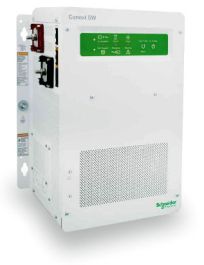The website claims this can be used as a hybrid inverter and tie to the grid. What else would I need to make this setup work? Also, is this inverter battery agnostic? So to recap…
1. I want to be able to reduce energy usage from the grid and prioritize solar. Will I need a grid tie pv inverter? Will any brand work? For example can I use a Sunny Boy?
2. I want to charge the batteries with solar when there’s extra unused energy,
3. I want to use diy lifepo4, not proprietary overpriced batteries.
4. Bonus - grid agnostic - auto switch to off grid when power goes out.
5. I don’t need to sell power back to the grid.
1. I want to be able to reduce energy usage from the grid and prioritize solar. Will I need a grid tie pv inverter? Will any brand work? For example can I use a Sunny Boy?
2. I want to charge the batteries with solar when there’s extra unused energy,
3. I want to use diy lifepo4, not proprietary overpriced batteries.
4. Bonus - grid agnostic - auto switch to off grid when power goes out.
5. I don’t need to sell power back to the grid.




